The Seven Samurai Laws That Will Forge Your Inner Warrior: Bushido Explained
- David Lapadat | Music PhD

- Sep 17, 2025
- 7 min read
Imagine a single blade deciding your fate—not in a clash of steel on some misty feudal battlefield, but in the quiet war raging inside your own mind.
That’s the raw, unyielding power of Bushido, the ancient code that transformed ordinary men into samurai legends—warriors who didn’t just conquer enemies, but mastered themselves.
In a world drowning in distractions, where “hustle culture” feels like a cheap knockoff of true discipline,
Bushido isn’t some dusty relic from Japanese history.
It’s a blueprint for unbreakable resolve, a philosophical katana slicing through modern chaos.
Over the next dive into this warrior ethos, we’ll unpack its seven core laws:
Gi (Rectitude), Yu (Courage), Jin (Benevolence), Rei (Respect), Makoto (Honesty), Meiyo (Honor), and Chugi (Loyalty).
I’ll weave in gripping historical anecdotes that bring these principles to life, show you how to wield them in your daily grind, and even spotlight must-read books that deepen the legend.

By the end, you’ll walk away not just informed, but ignited—ready to etch your own code into the chaos of 2025.
Buckle up; this isn’t armchair philosophy. It’s a call to arms for your soul.
Gi: Rectitude – The Iron Spine of Justice
At the heart of Bushido beats Gi, or Rectitude—the unshakeable commitment to justice that demands you act on what’s right, no matter the cost.
Think of it as your moral compass supercharged on steroids, a gut-level duty that cuts through the fog of excuses like a katana through silk.
It’s not about blindly following rules; it’s about discerning the true path and charging down it with zero hesitation.
In a samurai’s world, where loyalty to a lord could mean life or ritual suicide, Gi was the foundation that kept the entire code from crumbling.
Flash back to 1336, during the turbulent Nanboku-chō period.
Kusunoki Masashige, a fierce loyalist to Emperor Go-Daigo, faced an impossible stand at the Battle of Minatogawa.
Outnumbered by the shogunate’s hordes, with defeat staring him down like a demon in the dawn light, Masashige didn’t retreat or negotiate.
He charged headlong into the fray, sword raised, his men roaring behind him.
They fell to the last man, but in that blaze of defiance, Masashige embodied Gi: dying for justice rather than bending to corruption.
His death wasn’t a tragedy—it was a thunderclap that echoed through history, inspiring generations to choose righteousness over survival.
Today, Gi hits hard in the subtle battles we all fight.
That nagging voice urging you to cut corners at work?
Or stay silent when a friend gets wronged?
Channel Masashige: pause, align with your inner justice, and act. It’s the difference between a life of quiet regret and one forged in fire.
Apply it, and watch how decisions sharpen—your relationships deepen, your confidence surges.
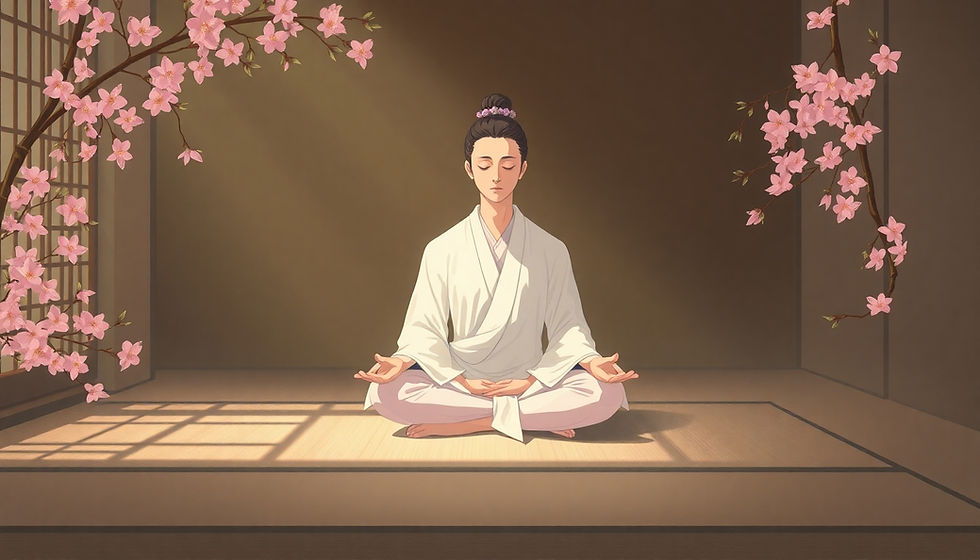
But justice without fire?
That’s just cold steel.
Enter Yu, where courage ignites the spark.
Yu: Courage – The Quiet Storm That Outruns Fear
Yu, the second pillar, is Courage—the relentless fire that doesn’t flicker, even when shadows of doubt loom large.
Forget the Hollywood trope of reckless heroes barreling into danger; true Yu is a calculated blaze, the inner storm that propels you forward because fear is merely a shadow you learn to outpace.
It’s bravery laced with wisdom: assessing risks not to avoid them, but to conquer them head-on.
For samurai, this meant riding into outnumbered skirmishes or facing duels where one slip meant eternity.
Our tale here transports us to 1612, on the fog-shrouded Ganryu Island.
Miyamoto Musashi, the undefeated sword saint, had a score to settle with his rival, Sasaki Kojiro—a bladesman whose “Swallow Cut” could slice a bird mid-flight.
Musashi arrives not early, but deliberately late, paddling across in a borrowed boat and carving a wooden oar into a makeshift bokken (wooden sword) en route.
As Kojiro lunges with lethal precision, Musashi sidesteps and counters with a devastating overhead strike, shattering his foe’s guard and ending the duel in one heartbeat.
It wasn’t luck; it was Yu—pure, unflinching nerve turning potential doom into dominance.
Musashi later reflected in his seminal work that true courage blooms from the mind’s unclouded clarity.
In your 9-to-5 arena or personal crossroads, Yu whispers the same: that terrifying pitch to the boss, the vulnerable confession in a fading relationship—suit up, stare it down, and strike.
The payoff?
Not just survival, but growth that sticks.
Yet, unchecked courage can rage into recklessness. That’s where Jin steps in, tempering the blade with mercy’s edge.

Jin: Benevolence – Kindness as the Ultimate Weapon
Jin, Benevolence, flips the warrior script entirely.
Samurai weren’t bloodthirsty brutes; they were masters of the “soft blade”—compassion that disarms enemies before a single clash.
It’s empathy in armor: extending help without strings, recognizing that true power elevates others, not crushes them. In Bushido, Jin wasn’t weakness; it was strategy, forging alliances from ashes and turning rivals into reluctant allies.
Picture the brutal winter of 1561, amid the Sengoku period’s endless wars.
A devastating famine grips Kai Province, starving peasants and soldiers alike.
Uesugi Kenshin, the dragon of Echigo and a warlord whose name struck terror, learns his bitter enemy, Takeda Shingen, is on the brink.
Instead of gloating or striking, Kenshin loads cart after cart with rice from his own dwindling stores and dispatches them straight to Shingen’s gates.
“I fight the man, not the hungry,”
he declares through a messenger.
Shingen, moved, not only accepts but later spares Kenshin’s envoy during a counter-raid, whispering, “Linked rings do not rust.”
This act of Jin didn’t end their rivalry—it humanized it, creating a fragile peace amid chaos.
Fast-forward to now: Jin is your secret hack for a fractured world. That overwhelmed teammate buried in emails? Offer your bandwidth without fanfare. The stranger struggling with groceries? Lend a hand.
But benevolence without boundaries? It invites exploitation.
Cue Rei, the bow that honors without surrender.
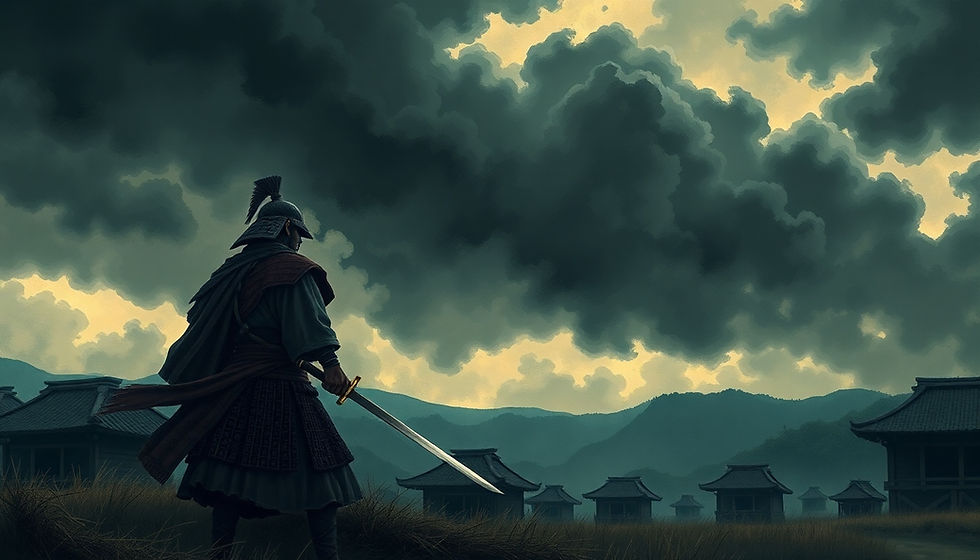
Rei: Respect – The Art of Bending Without Breaking
Rei, Respect, is the graceful bow at Bushido’s core—the subtle art of acknowledging the divine spark in every soul, from exalted emperor to lowly foe.
It’s not performative courtesy; it’s ego’s antidote, a recognition that the real battlefield lies within pride’s illusions. Bow too low, and you invite contempt; too high, and arrogance blinds you.
Master Rei, and conflicts dissolve like mist at dawn, doors swing wide without a push.
The 47 Ronin saga of 1703 immortalizes this.
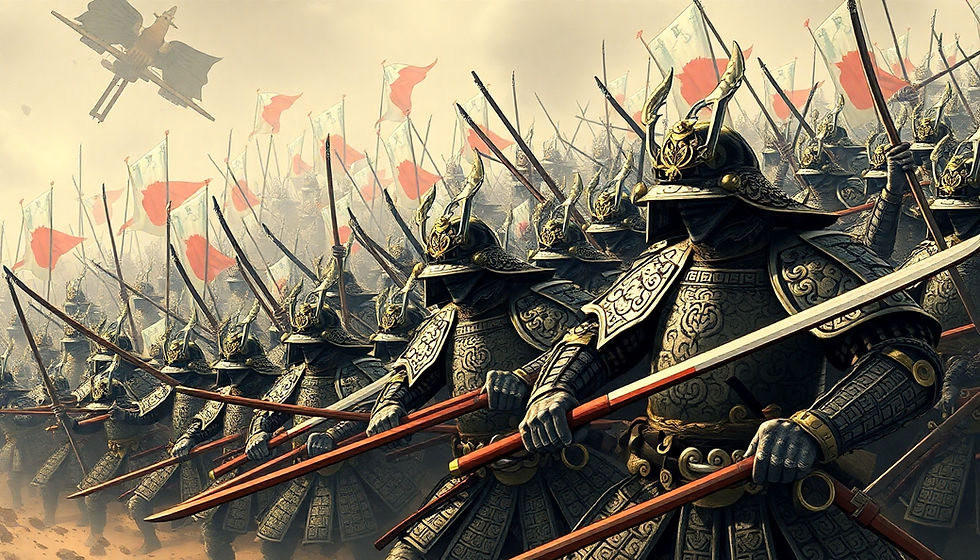
After Lord Asano Naganori is forced into seppuku for a palace slight by the scheming Kira Yoshinaka, his 47 retainers become masterless ronin, biding two years in disguise—monks, merchants, even street performers—to plot revenge.
When they finally storm Kira’s opulent mansion on a snowy winter night, blades flashing in torchlight, they corner the villain.
But leader Oishi Kuranosuke halts the killing blow. He presents Kira with Asano’s own dagger, urging him to commit honorable seppuku first—a profound bow to dignity, even for the fallen.
Only then do they claim his head, their respect intact amid vengeance.
In boardrooms or rush-hour gridlock, Rei is that vital pause before the snap—honoring the other’s humanity to defuse the fuse.
I’ve used it in heated debates; a simple nod shifts tides from storm to serenity.
Lies, though?
They corrode respect like acid on iron. Makoto awaits, truth’s unyielding forge.

Makoto: Honesty – The Blade Forged in Raw Truth
Makoto, Honesty, slices deepest because it’s born of unvarnished reality—no puffed-up glory tales, no convenient omissions.
Samurai lived it fiercely: a single deception could demand seppuku, as trust was the thread weaving their fragile world.
It’s vulnerability as invincible armor—speak your truth, align word and deed, and authenticity becomes your fortress.
Zen master Takuan Soho captured this in the 1600s while mentoring swordmaster Yagyu Munenori, shogun’s instructor.
In “The Unfettered Mind,” Takuan warns that a warrior’s strike must flow from sincere intent—no feints or hidden agendas dull the soul’s edge, just as a deceptive parry invites fatal error in duel.
One errant lie, and the mind clouds; one honest breath, and clarity reigns supreme.
Ever tangled in half-truths at work or home?
Makoto demands you untie the knot—confess the oversight, voice the unmet need.
During a recent project meltdown, owning my misstep didn’t end my role; it rebuilt bridges stronger.
Truth liberates, but without honor’s weight? It’s fleeting.
Meiyo crowns it all.
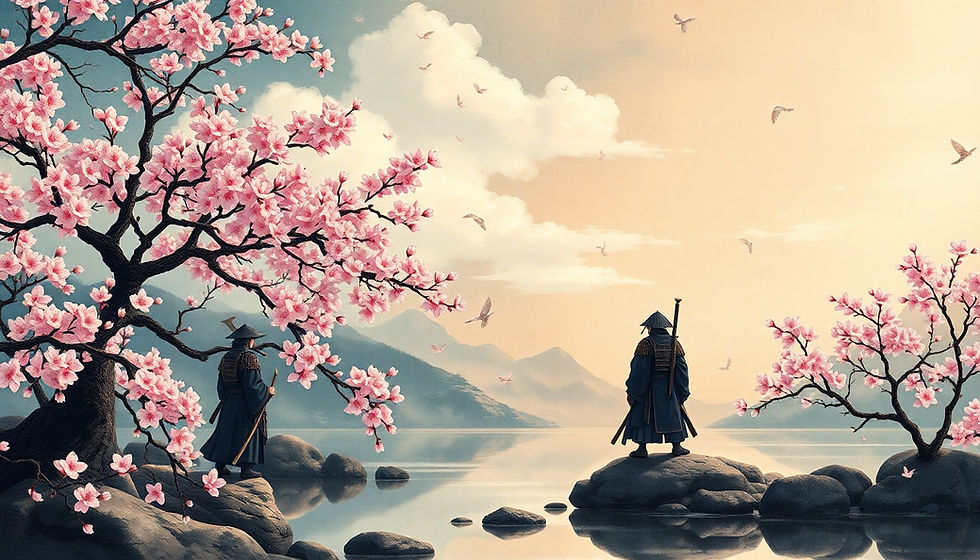
Meiyo: Honor – The Silent Legacy You Carry
Meiyo, Honor, is Bushido’s crown—the quiet arbiter in your soul, untouched by cheers or crowns.
It’s the gravity of living your code, win or lose, where disgrace demands restoration, often at blade’s point.
Not shame’s whip, but balance’s blade: your name is legacy; guard it like a sacred scroll.
The 47 Ronin again: post-storming Kira’s lair, these vengeful ghosts don’t scatter into shadows.
They march to Edo authorities, surrender en masse, and commit seppuku in a sunlit courtyard—47 lives offered to seal their vow.
It wasn’t defeat; it was apotheosis, their honor transforming tragedy into timeless kabuki lore, shrines, and songs that still stir Japanese hearts.
Ditch the quick wins that chip your worth—cheat the system, ghost commitments—and Meiyo’s shadow lengthens.
Choose the hard path, and legacy gleams.
Heavy?
Loyalty shares the yoke.
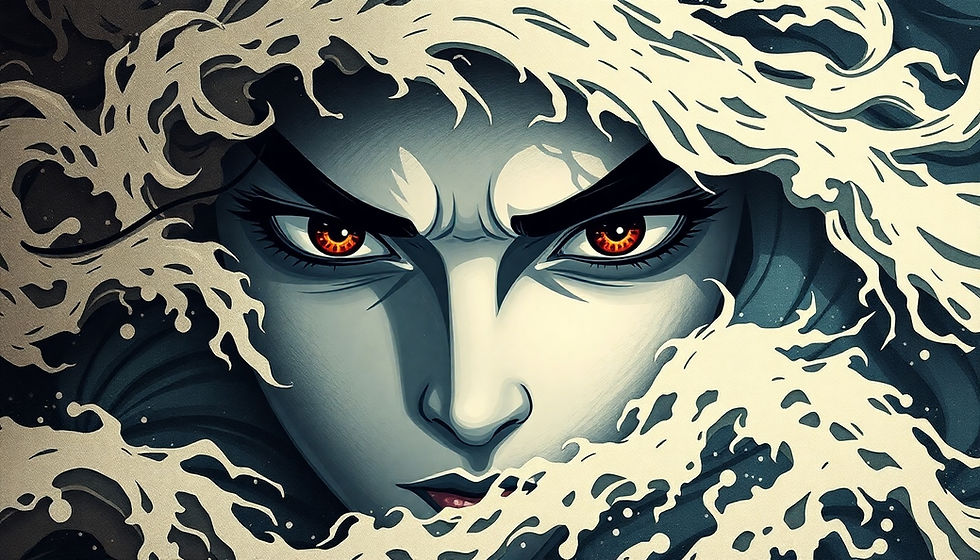
Chugi: Loyalty – Oaths That Outlast Empires
Chugi, Loyalty, is the vow etched in blood—the ride-or-die devotion to those who’ve earned it, outlasting thrones and tempests.
Not blind fealty, but discerning allegiance: question wisely, but once bound, fight to the final exhale.
For samurai, it meant daimyo over self, clan over conquest.
The Ronin’s arc peaks here: disbanded after Asano’s death, they endure two years of scorn—mocked as drifters—while scheming in silence.
On that fateful snowy assault, they behead Kira, present his head at Asano’s grave, then face execution with stoic grace.
Their Chugi wasn’t for glory; it was sacred debt repaid, a bond defying death itself.
In teams or tribes, Chugi means weathering storms—showing up messy, building bastions.
I’ve seen it salvage startups on the brink.
Betrayal? Honor’s venom—avoid it.
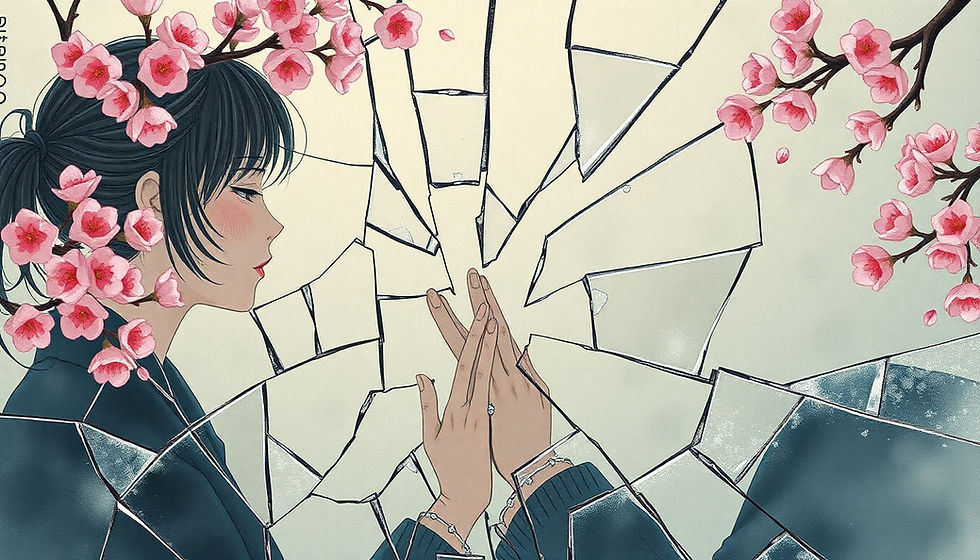
Timeless Tomes: Books That Breathe Bushido
Bushido’s fire endures in ink.
Start with Inazo Nitobe’s Bushido: The Soul of Japan (1900)—a poetic bridge for Western minds, unpacking virtues with elegance.
For raw grit, Yamamoto Tsunetomo’s Hagakure (1716) roars: “The way of the samurai is found in death”—unflinching counsel on loyalty and resolve.
Miyamoto Musashi’s The Book of Five Rings (1645) strategizes Yu through duels and life, a mindset manual for any arena.
And Takuan Soho’s The Unfettered Mind (1600s) marries Zen to Makoto, freeing the spirit for peak flow.
These aren’t reads; they’re rituals—dive in, and emerge reforged.
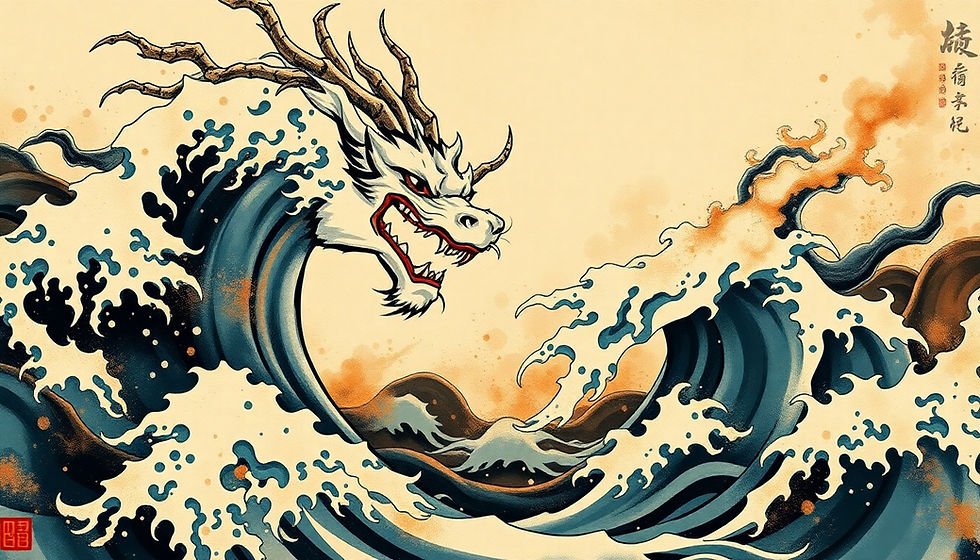
Forge Your Code: Bushido for the Battlefield of Now
There you have it—the seven pillars of Bushido, blood-soaked and brilliant, from Masashige’s charge to the Ronin’s snow.
In 2025’s frenzy—AI upheavals, fractured feeds—these laws aren’t optional; they’re oxygen.
Which strikes deepest: Yu’s fire in your fears, or Chugi’s oath in isolation?
Weave one into tomorrow; watch the shift.
Grab those books, etch your code, and charge. Every day’s a duel—win it with soul.
What’s your first Bushido move?





Comments